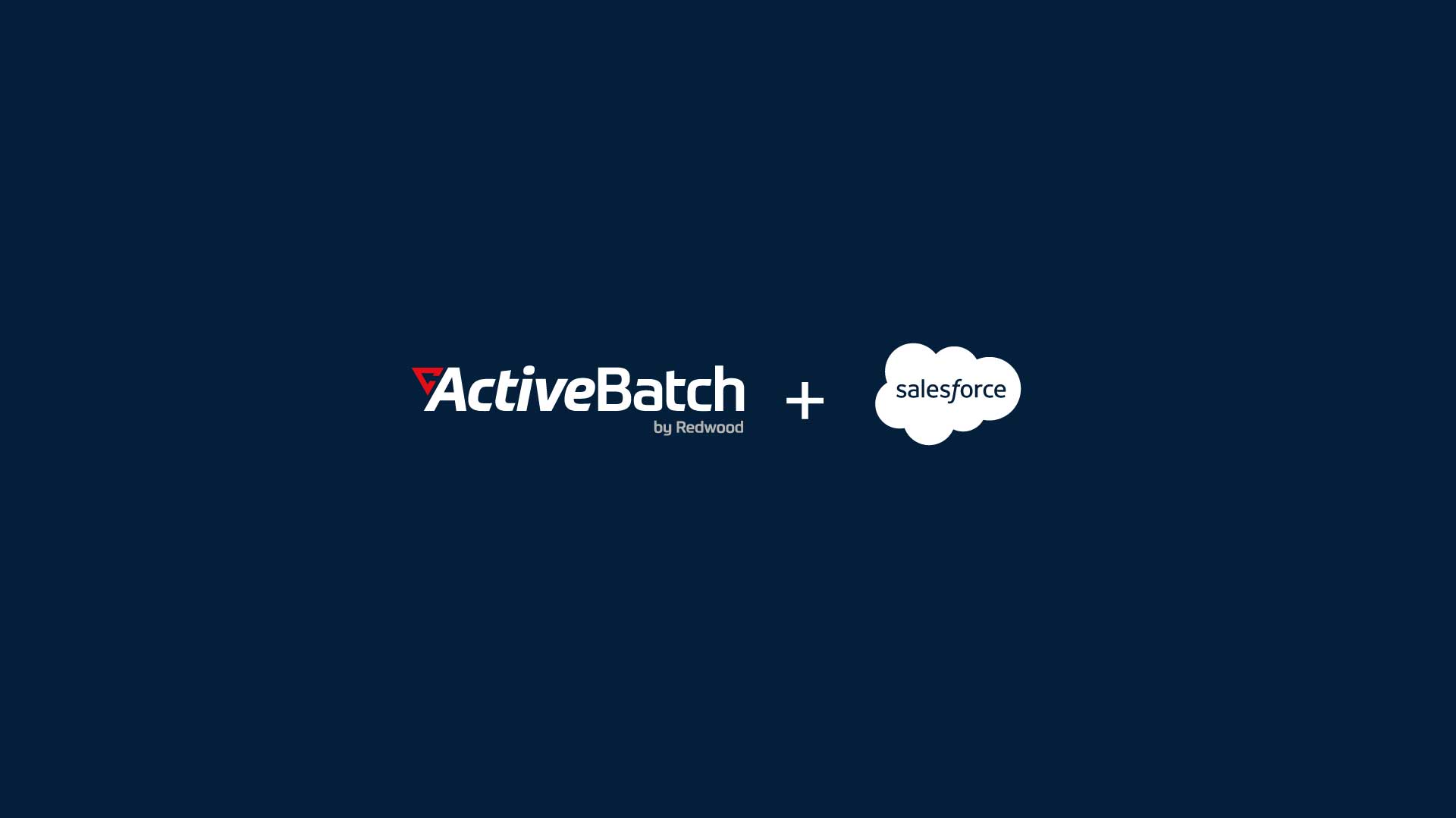By now it’s well established that Salesforce is not just a CRM; it’s a powerful tool that streamlines business processes and maximizes efficiency. But what if you could actually streamline those business processes even further?
Using a comprehensive workload automation and job scheduling platform like ActiveBatch, organizations that use Salesforce can enhance and add a wide range of functionalities. Let’s examine some use cases that show how workload automation tools can add even more power to an already robust solution.
Optimize Sales and Marketing Workflows
ActiveBatch enhances the Salesforce platform’s existing automation tools such as Process Builder and Workflow Rules. Here are some significant ways that integrating with a process automation tool like ActiveBatch can significantly improve the efficiency of sales and marketing teams:
Automate lead management
Lead management can involve a significant number of manual tasks between qualification, scoring, assignment, and routing. This can also greatly lengthen the sales process. Integrated with Salesforce, ActiveBatch can automatically distribute leads to sales reps based on predefined criteria to ensure prompt follow-up. For example, suppose a new lead is created in Salesforce. In that case, ActiveBatch can automatically assign the lead to the most appropriate sales rep based on criteria like territory, industry, or lead score.
Personalized Communication and Campaigns
Automatic, personalized communication is key to success on modern marketing and sales teams. ActiveBatch can help Salesforce trigger targeted emails, notifications, and reminders based on specific customer interactions or events in Salesforce.
When a lead reaches a specific stage of the sales funnel, ActiveBatch can trigger an automated email campaign in Salesforce that delivers content based on the lead’s interests, previous interactions, or demographic data. This helps drive conversions and ensures time-dependent communications are never lost in the shuffle.
Sales Pipeline Management and Forecasting
For real-time visibility into sales performance, ActiveBatch can automate the collection and aggregation of sales data. This collection goes beyond Salesforce data—ActiveBatch can collect and consolidate sales data from sources like ERP systems or order management platforms, then update Salesforce with the latest information. This enables sales managers to accurately forecast sales and make informed decisions.
Workflow Approval Process
If a sales proposal requires approval, ActiveBatch can automate the approval workflow by routing the proposal to the appropriate approvers based on predefined rules. ActiveBatch can then track the approval status, send reminders, and notify stakeholders of the approval outcome. Because Salesforce and ActiveBatch generate email alerts and integrate with collaboration tools like Slack, teams can receive real-time communication and manage tasks immediately.
Optimize Operational Efficiency
Integrating Salesforce with a workflow automation solution can optimize processes from data entry to project management to reporting. Here are some examples.
Automated Data Integration and Record Processing
ActiveBatch can automate customer data synchronization between Salesforce and an inventory management system. When an order is placed through Salesforce, ActiveBatch can ensure the inventory system update is autolaunched. This ensures accurate stock levels and efficient order fulfillment.
When new records are created in Salesforce, ActiveBatch can automatically trigger actions or workflows in response. This can include tasks like data validation, assignment, notifications, and follow-up actions. ActiveBatch can also automatically trigger actions or workflows for related records, such as when a sales opportunity is marked as closed-won in Salesforce. ActiveBatch can automatically create a new account, update contact information, generate a sales order, and initiate the customer onboarding process.
Project Management Enhancement
ActiveBatch can automate project management workflows by integrating Salesforce with project management tools. When a new project is created in Salesforce, ActiveBatch can automate project tasks, assign tasks to team members, and set deadlines. This enhances task management efficiency and team collaboration.
Automation capabilities like streamlined processes reduced manual effort, and improved data accuracy also decrease workload for Salesforce admins, freeing up more resources for high-value projects.
Automated Reporting and Analytics
ActiveBatch can automatically collect sales data from multiple sources and consolidate it into multiple reports. By pulling from platforms such as Salesforce, marketing automation platforms, and ERP systems, ActiveBatch can provide comprehensive reports that provide real-time insights and accurate information.
Because ActiveBatch can pull from different platforms and systems, this also automates tasks like data entry. Paired with Salesforce’s data validation rules that ensure accuracy and integrity, ActiveBatch can help reduce data entry errors with data entry and synchronization across systems. By integrating Salesforce with an end-to-end tool like ActiveBatch, organizations can revolutionize their business processes and drive success in their digital transformation journey.
Frequently Asked Questions
Though Salesforce has many automation capabilities, end-to-end workload automation and job scheduling tools like ActiveBatch allow users to automate and schedule a much wider range of IT and business processes than Salesforce alone. ActiveBatch also offers extensive cross-platform integration for seamless connections across systems, applications, databases, and technologies. ActiveBatch can also integrate with diverse IT environments, including cloud-based, on-premise, and hybrid environments. That results in end-to-end automation across an organization’s entire technology landscape, a capability far beyond Salesforce.
Explore how to automate end-to-end workflows in half the time with ActiveBatch.
ActiveBatch offers extensive integration capabilities with its flexible API and support for web services and system connectors. That means that in connecting Salesforce, teams can also connect native Salesforce tools like Salesforce Flow and apps like Jitterbit, Workato, and Informatica Cloud Integration.
Discover ActiveBatch’s vast integration capabilities.
Apex, the Salesforce programming language, allows developers to build custom logic and extend automation capabilities. Because ActiveBatch and Salesforce have such flexible APIs, the tools integrate seamlessly, which allows smooth data flow between Salesforce and ActiveBatch.
Learn about how ActiveBatch can automate even the most complex IT processes.
